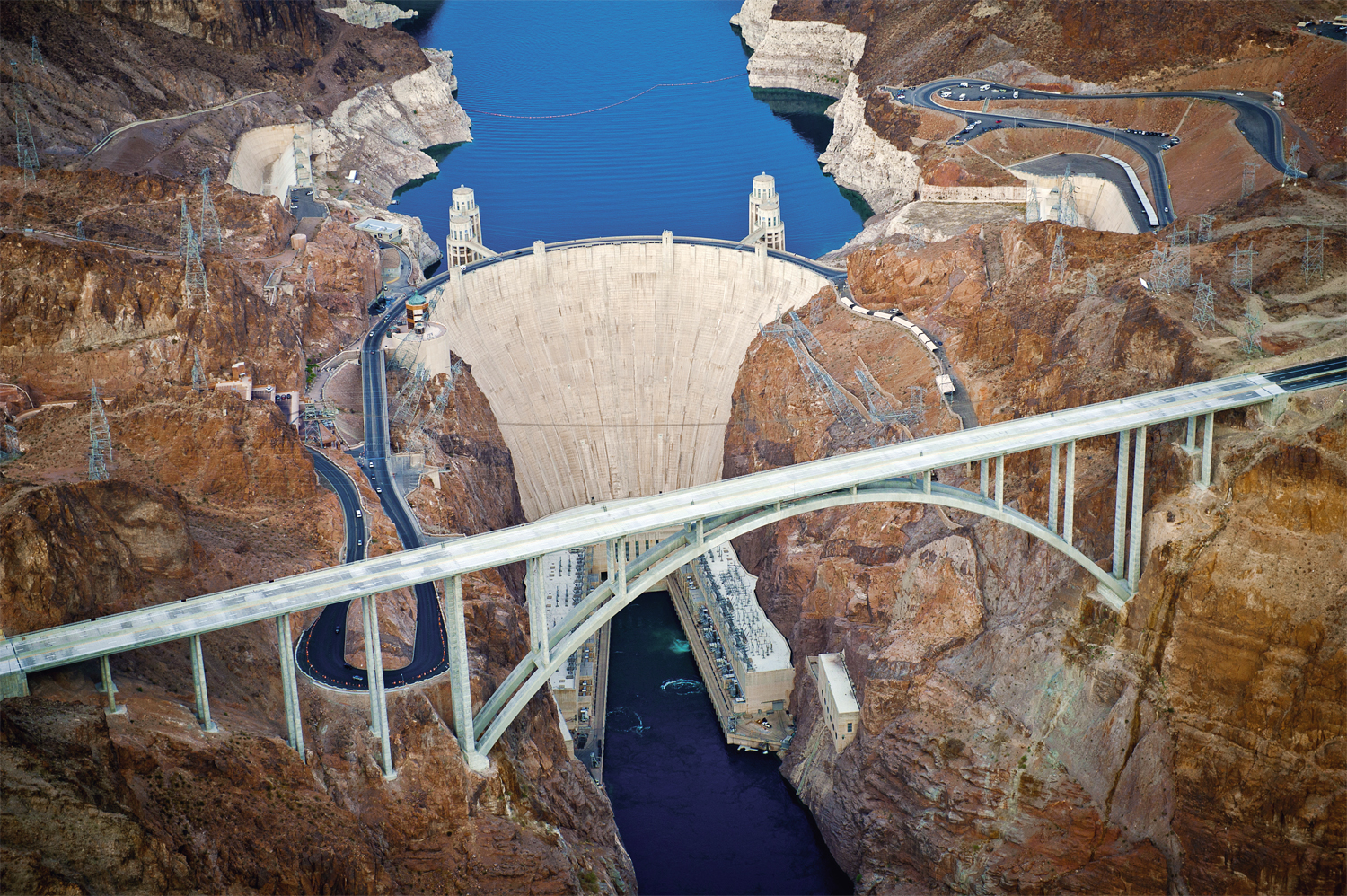Mass concrete

|
[edit] Introduction
The generally accepted and widely-used definition of ‘mass concrete’ is that provided by the American Concrete Institute (ACI). It defines mass concrete as:
“…any volume of structural concrete in which a combination of dimensions of the member being cast, the boundary conditions, the characteristics of the concrete mixture, and the ambient conditions [which] can lead to undesirable thermal stresses, cracking, deleterious chemical reactions, or reduction in the long-term strength as a result of elevated concrete temperature due to heat of hydration.”
The emphasis on thermal behaviour – which can cause a loss of structural integrity and monolithic action – is the only characteristic that distinguishes mass concrete from other concrete work.
Mass concrete is usually associated with large, poured in-situ concrete structures such as dams, bridge piers, foundations to very tall buildings and other large volume placements which are at least 1m-deep. In many cases, mass concrete is unreinforced and therefore strong in compression but weak in tension.
[edit] Hoover Dam
Construction of the Hoover Dam (pictured) on the Colorado River, USA, began in 1931, required enormous quantities of mass concrete (3.3 million cubic metres) to construct its arch-gravity structure. It is 13.7m wide at the top and 201m-wide at the bottom. To dissipate the heat generated by the cooling (setting) of the mass concrete required a vast network of water circulating through steel pipes. Without this, the concrete would still be setting today.
[edit] Related articles on Designing Buildings Wiki
- Admixtures in concrete.
- Cast-in-place concrete.
- Cement mortar.
- Compression.
- Compressive strength.
- Concrete-steel composite structures.
- Concreting plant.
- Laitance.
- Portland cement.
- Precast concrete.
- Prestressed concrete.
- Power float.
- Reinforced concrete.
- Self-compacting concrete.
- Smart concrete.
- Testing concrete.
- The properties of concrete.
- Types of concrete.
Featured articles and news
The UK’s largest air pollution campaign.
Future Homes Standard, now includes solar, but what else?
Will the new standard, due to in the Autumn, go far enough in terms of performance ?
BSRIA Briefing: Cleaner Air, Better tomorrow
A look back at issues relating to inside and outside air quality, discussed during the BSRIA briefing in 2023.
Restoring Abbotsford's hothouse
Bringing the writer Walter Scott's garden to life.
Reflections on the spending review with CIAT.
Retired firefighter cycles world to raise Grenfell funds
Leaving on 14 June 2025 Stephen will raise money for youth and schools through the Grenfell Foundation.
Key points for construction at a glance with industry reactions.
Functionality, visibility and sustainability
The simpler approach to specification.
Architects, architecture, buildings, and inspiration in film
The close ties between makers and the movies, with our long list of suggested viewing.
SELECT three-point plan for action issued to MSPs
Call for Scottish regulation, green skills and recognition of electrotechnical industry as part of a manifesto for Scottish Parliamentary elections.
UCEM becomes the University of the Built Environment
Major milestone in its 106-year history, follows recent merger with London School of Architecture (LSE).
Professional practical experience for Architects in training
The long process to transform the nature of education and professional practical experience in the Architecture profession following recent reports.
A people-first approach to retrofit
Moving away from the destructive paradigm of fabric-first.
International Electrician Day, 10 June 2025
Celebrating the role of electrical engineers from André-Marie Amperè, today and for the future.
New guide for clients launched at Houses of Parliament
'There has never been a more important time for clients to step up and ...ask the right questions'
The impact of recycled slate tiles
Innovation across the decades.
EPC changes for existing buildings
Changes and their context as the new RdSAP methodology comes into use from 15 June.























